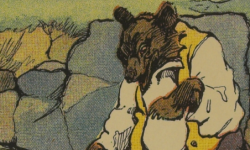Principal Investigators: D.B. Dowd, Washington University in St. Louis; Gerald Early, Washington University in St. Louis; Amanda Gailey, University of Nebraska
Race and Children's Literature of the Gilded Age explored the possibility of a digital edition that would include scans and transcriptions of illustrated children's literature — including novels and popular culture materials — published in the U.S. between 1865 and 1913, two dates which provide racially significant bookends to the Gilded age, the former representing the formation of Reconstruction and the latter the foundation of the NAACP. RCLGA would allow researchers to examine how this body of literature and illustrations helped construct notions of race and childhood during a pivotal period in U.S. history.
RCLGA was organized around particular authors' work. The first is Joel Chandler Harris, famous for his purportedly scholarly documentation of African American folk tales, and the project will eventually grow to encompass several more authors of racially interesting children's literature during the period. Editorial attention focused especially on illustrations, both because these occupy a central place in the universe of children's literature and because the period is a pivotal one for the commercial illustration trade. New technological means of low-cost reproduction made possible the mass distribution of illustrated work (in newspapers, books), and Gilded Age children's literature provides a view of the graphic vocabulary in development as the industry took flight.
Because of the controversial nature of these works and the variety of audiences the edition may draw, the editors planned to provide multiple methods of access to the editions. One track would be geared toward elementary schoolers and their teachers, another toward high schoolers, and one, of course, for scholarly readers, each with its own level and kind of editorial intervention.

Gigapixel Viewer
The RCLGA project is image-rich. The images range from elaborate book bindings to consumer advertising. And, in many cases, the images are as important as the texts in understanding the volumes' messages about race, childhood and Gilded Age culture. Consequently, we wanted to offer those images to web site visitors in a way that permits them to pan across and zoom into collections of images, so we developed a Gigapixel Viewer. This software is no longer maintained.

XTF Prototype
In 2008, we developed a prototype web site for the RCLGA project. We used the California Digital Libraries eXtensible Text Framework (XTF). We've since taken the web site off-line at Washington University.


